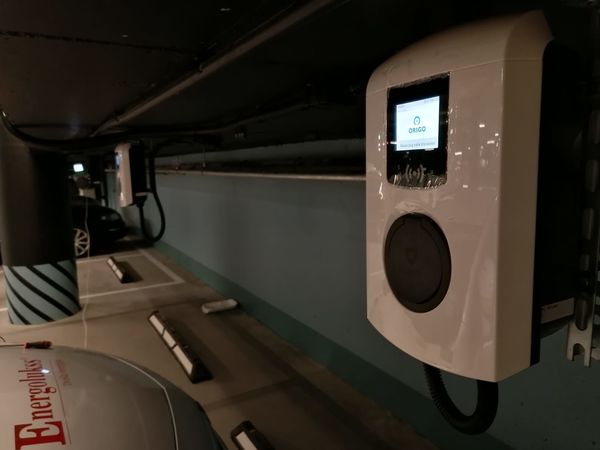Increasing number of motorists, when choosing a new vehicle, prefer electric cars, which enjoy increasing popularity, thus leaving fossil-fuel powered vehicles in history. Probably we have noticed that vehicles with blue licence plates are more frequently visible in the city streets, which is confirmed also by the information provided by the RTSD – as at 1 October this year, 1,049 electric vehicles are registered in Latvia, but more significant is the growth rate of registration, which has reached +56% since the beginning of 2020. These indications leave room to expect that, during the upcoming years, increase in number of electric vehicles will be significant, and this factor suggests the necessity of development of charging infrastructure both at public places and in the domestic environment, furthermore, another matter becomes very important – how to choose charger for electric car correctly.
We consult one of the most experienced suppliers of power solutions in Latvia – Energolukss, which offers and installs also electric car charging units at home.
Is it recommended to choose a special charging unit to install at home?
Of course, the first question is, whether a special electric car charging unit is required at home, since we have the usual socket?
Specialists admit – yes, such a unit is unambiguously recommended due to the following two aspects:
- Safety. Standard household socket is able to provide 2.3 kW power output – it must be clear that using maximum power of socket for continuous period leads to heating of cables, which is a serious fire risk. Taking into account the fact that the vehicle will be charged on regular basis and for several years, such risks should be avoided by investing in creation of safe charging system and choosing tested, certified charging unit, furthermore, it is also recommended to arrange a dynamic load equalisation system.
- Charging speed. Using a special unit can increase charging speed by up to 10 times. Just to understand – while regular household socket provides 2.3 kW power output for charging a vehicle, which would fully charge the globally best-selling electric car Nissan Leaf with 40 kWh battery in approximately 20 hours, which means that overnight charging would not result in maximum battery level in the morning, a small wall charger can provide increase in power up to 22 kW and charge the aforementioned Nissan Leaf in approximately 4–6 hours, and the car would be fully charged in the morning.
How to choose
a charger?
Several factors must be taken into account, when choosing a suitable charger:
- Charging power. Power of alternating current suitable for charging your electric vehicle must be ascertained – it depends on the on-board charger of your vehicle, which correspondingly determines maximum charging power of alternating current for the particular vehicle. Majority of vehicles currently available in our market are able to charge at the power of 3.7 kW or 7.4 kW, but it is important to verify it before purchase and installation of the charging station.
- Household electricity load inspection. It should be calculated whether the current connection will be sufficient for optimum charging of electric vehicle, because load will grow significantly without any doubt. Example for comparison – charging cycle of one electric vehicle will resemble a parallel operation of 4–5 microwave ovens. In order to calculate safe load, definitely involve professionals. The resulting data will make it possible to understand necessity for load balancing function.
- Selection of charging connector. It must be selected according to the built-in charging socket made by the car manufacturer. Type 2 connector will be suitable for the electric cars offered by the European car manufacturers, while Type 1 will be suitable for Japanese cars; it should be noted that global car manufacturers also gradually switch to Type 2, which is on high demand in the European market.
- Safety. It must be verified that the charging unit chosen by you has built-in direct current detection and overload protection. If the charging unit is not equipped with direct current leakage protection, the object must be equipped with type B residual current protection, which may cost up to EUR 300. Additionally, fuse of corresponding load and standard residual current protection must be provided for at the object (unless it is built-in and type B residual current protection is provided for at the object).
- Remote unit management and payment options. In order to provide possibility to connect the charging unit to any remote unit management system and/or payment system, for example, Elektrum or e-mobi payment tool, OCPP communication protocol must be built in your charging unit and possibility to connect Ethernet cable or SIM card for data exchange is required. The process of integration for untested units may be complicated and even impossible, because, in order to provide successful integration, change of the unit settings will also be required. It must be taken into account that MID certified electricity meter must be built in the charging unit.
- Communication with the vehicle. The charging unit must comply with the MODE 3 communication mode, which provides a simplified definition of the way of communication between your charging unit and and your vehicle.
Elektroauto uzlāde mājās, Foto: "Energolukss"



